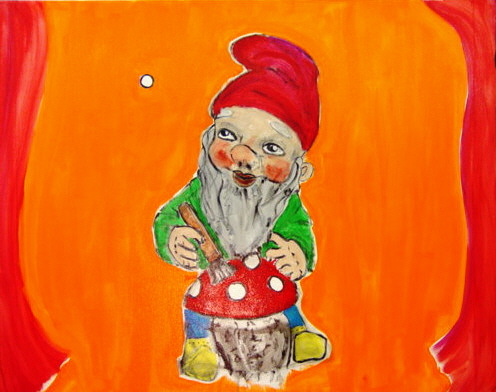Da es hier doch wohl ein paar gibt, die mal einen Retreat gemacht haben nach S.N. Goenka oder mit dem Gedanken spielen, mal einen zu machen, dachte ich mir waere es sinnvoll eine Diskussion zu eroeffnen wo die Pros und Contras und was es so an Material zu diesem Thema gibt diskutiert werden.
Erstmal das bekannte:
Erfahrungsbericht Vipassana: http://www.maennerherz.de/Vipassana%20Erfahrungsbericht
Hans Grubers recht bekannt gewordene Kritik an S.N. Goenkas Ansatz: http://www.buddha-heute.de/blog/2010/03 ... es-buddha/
Und hier gibt es ein paar Veroeffentlichungen zum Thema Theravada/Vipassana des Bikkhus Analayo, die in der Fachwelt viel Beachtung gefunden haben:
http://www.buddhismuskunde.uni-hamburg. ... ations.htm
Unter diesen Veroeffentlichungen ist folgende hoechst interessant, wo der Vipassana-Ansatz recht gruendlich auseinandergenommen und auch auf Hinsicht auf Stream Entry (Sotapanna) und die tieferen Verwirklichungen von Jhanas etc. analysiert wird: http://www.buddhismuskunde.uni-hamburg. ... nsight.pdf
Summa Sumarum bin ich bei meiner bisherigen Recherche dazu gekommen, dass man Goenka zwar eine gewisse dogmatische und sektiererische Tendenz vorwerfen kann, sein Teaching allerdings in Linie mit den Haupttraditionen des Theravada liegt und man ihm zumindest inhaltlich keine grossen Vorwuerfe machen kann. Um es mit den Worten eines Bekannten zu sagen, der auch schon laengere Kurse mitgemacht hat: "That guy vertainly knows what he is talking about."In sum, the foregoing has shown how key aspects of the development of
insight delineated in the early discourses could be approached through modern
day Theravāda meditation practice as exemplified in the U Ba Khin vipassanā
tradition, taught by S.N. Goenka.
A description of the actual technique of gradually scanning the body as such,
however, does not seem to be found in the discourses. In fact, when describing
the experience of dissolution of the body and the mind, the instructions given
during a vipassanā course taught by S.N. Goenka employ terms like kalāpa or
bhava ga, which appear to stem from a later period than the early discourses.56
The same is true of other modern day vipassanā meditation traditions, whose
techniques as such cannot be found in the early discourses and which draw upon
the fully developed Theravāda system, using terminology that came into use
considerably later.
Nevertheless, such modern practices do seem to present viable modes of im-
plementing the instructions on the development of insight found in the early dis-
courses. In as much as they conform to the basic pattern laid out for the practice
of insight by giving importance to a direct experience of the three characteristics,
they can rightfully lay a claim to being in accordance with the original instruc-
tions. In fact, the generality of the instructions found in the early discourses in a
way leaves it up to practitioners to develop their own more precise methods of
putting those instructions into practice, thereby enabling them to proceed on the
path to awakening in the way best suited to their own particular capacities and
proclivities. In the end, it is precisely this that really counts, namely that one actu-
ally walks the path to awakening.

